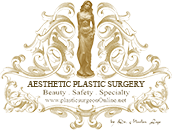Everyone in every culture, it seems, is on a quest for the perfect nose. But of course, there is nosuch thing; beauty standards vary, and a “strong” nose that causes embarrassment in one culture may be highly prized in another. This is why rhinoplasty is one of the top five most popular surgical procedures among men, and women aren’t far behind. According to the ISAPS Global Survey, there were over 730,000 rhinoplasties performed worldwide last year, and that number is expected to grow steadily. With so much interest in this procedure, patients need to have a clear understanding of what rhinoplasty is – and isn’t.
- While rhinoplasty is common, it still requires the skill of a specialist; not just any plastic surgeon can perform it. It’s important to let patients know your ISAPS membership indicates that you have exceptional skill and experience in this procedure.
- Make sure patients have a clear understanding of the potential risks. Rhinoplasty can ease problems that that make breathing difficult (such as a deviated septum), but may not completely eliminate them. In a few cases where the shape of the nose is radically altered, the patient may have more trouble breathing than before. Some patients, especially men, may also find that their voices are changed after rhinoplasty, sometimes for weeks or even months before returning to normal.
- Patients who have unrealistic expectations of “copying” their favorite celebrity’s nose should understand that each nose must harmonize with the rest of the face. The best results are the ones that look natural enough to go unnoticed.
- Because the nose is surrounded by delicate tissue, patients should be warned to expect facial bruising and “black eyes.” These can take up to two weeks to fade, and must be considered when planning the timing of the surgery and recovery.
- Some patients may not see rhinoplasty as a “real” surgery and underestimate their recovery time, or return to strenuous activities too soon. When patients understand the important role they play in their own recovery process, they are more like to follow your post-operative instructions.
- Caution patients not to be anxious or upset if their new nose isn’t quite what they imagined, and reassure them that their nose will continue to change throughout the healing process.
- Every nose, no matter how expertly sculpted by nature or by a surgeon’s hands, will still have tiny bumps, asymmetries and other characteristics that make it unique. in fact, these characteristics ensure that the nose is balanced with the rest of their features. It’s important that patients understand that their “new” nose will not be perfect – and they wouldn’t want it to be, anyway.
- Recommend that patients wait a minimum of two years before undergoing revision rhinoplasty. These are relatively common, as many patients want a little “fix up” of the original work; there are even specialists in revision rhinoplasty.
- Patients who cannot easily afford rhinoplasty may be able to have the cost covered (fully or partially) by insurance if it’s deemed to be medically necessary. A few patients may even ask (or expect) you to recommend an unnecessary surgery for insurance reasons. You may want to be prepared with a polite but clear explanation of why you cannot to do this.
- Above all, patients should know that you are always ready to listen to their goals, desires, fear and concerns about their rhinoplasty. Be sure to listen as well as talk, and play the role of guide rather than teacher.
The chances of a successful rhinoplasty are much better when expectations and communication between doctor and patient are clear. By providing patients with the information they need, you can influence the outcome of their rhinoplasty before they even walk through your office door.
